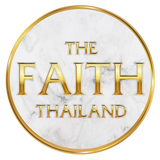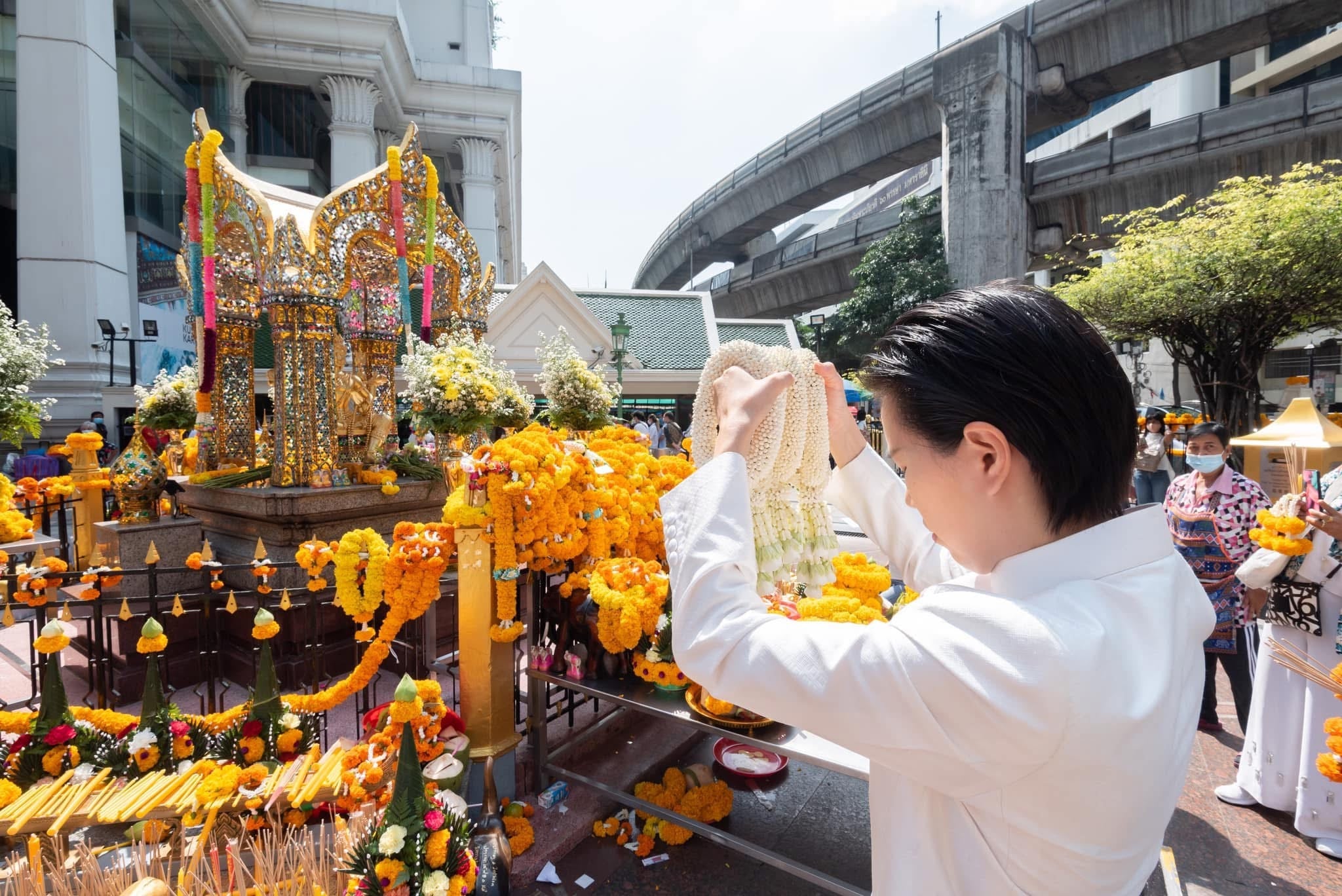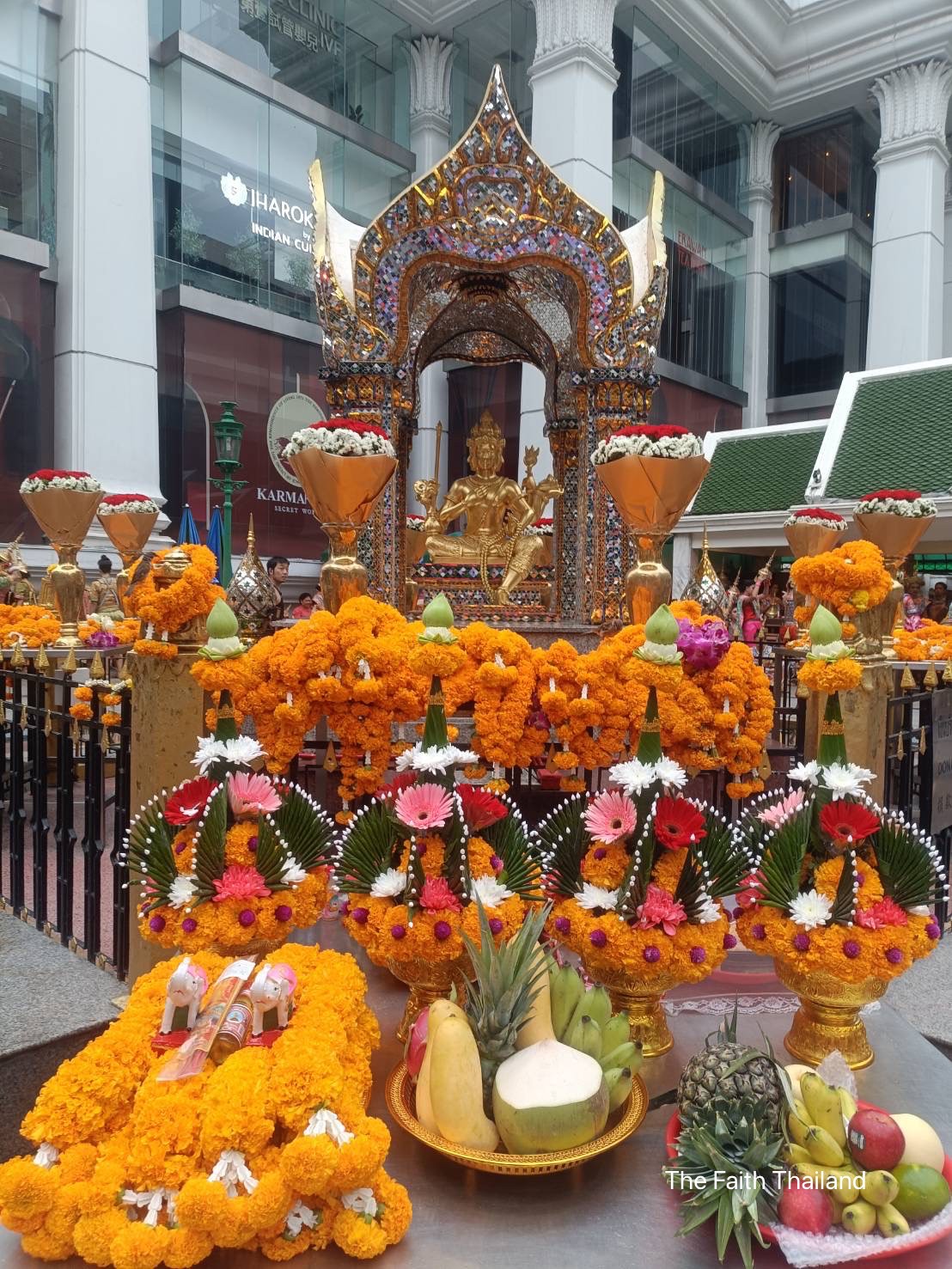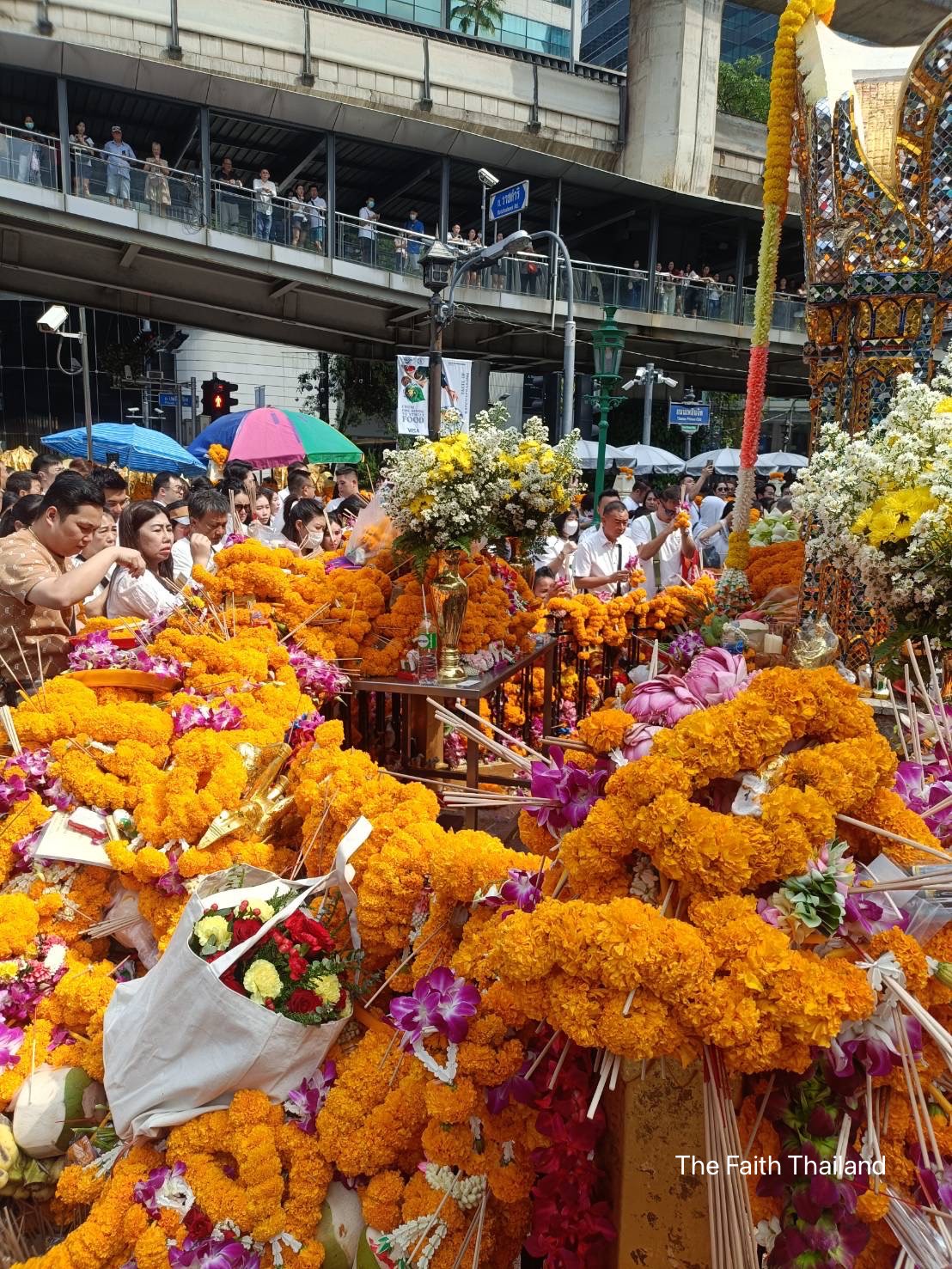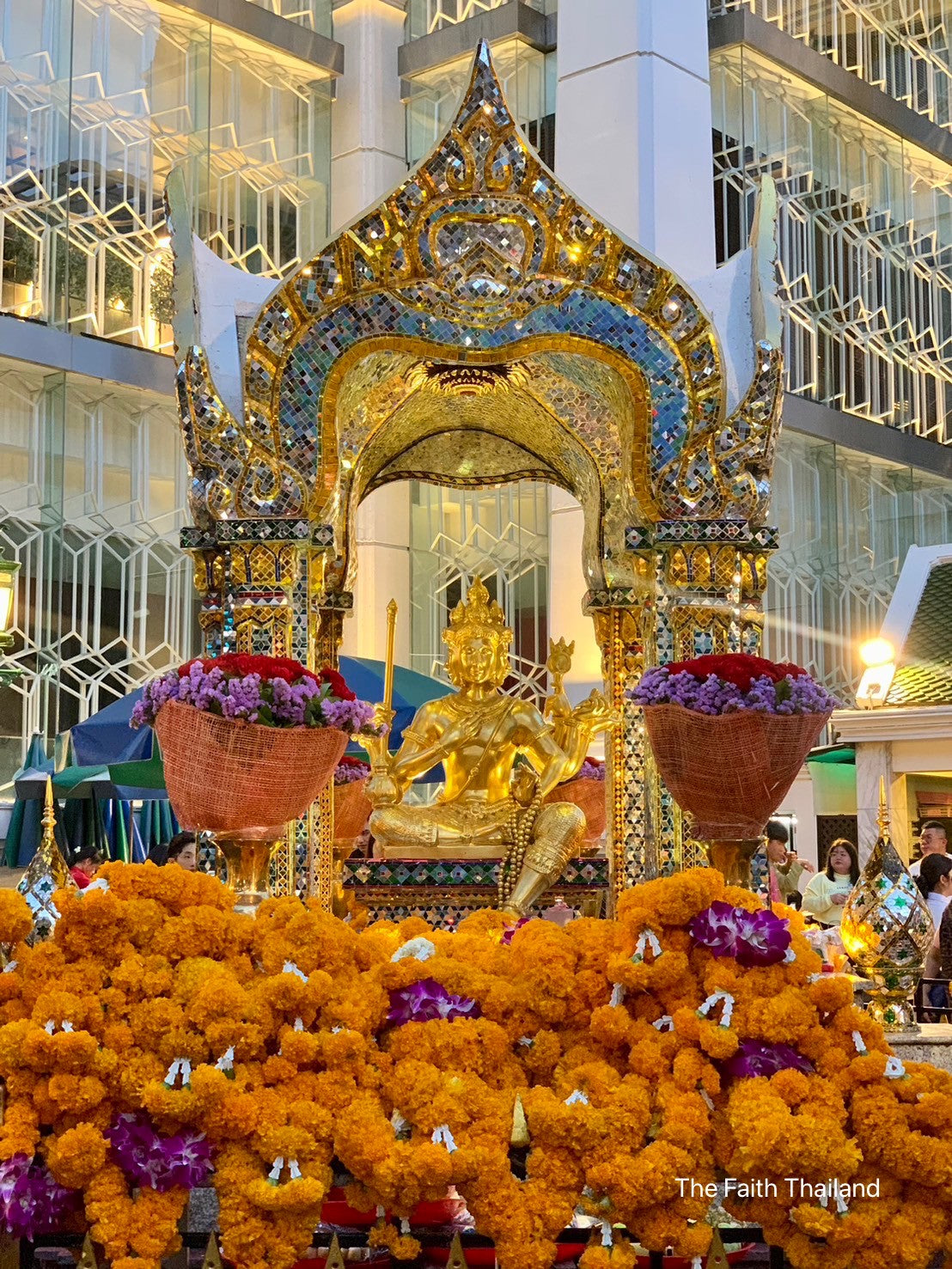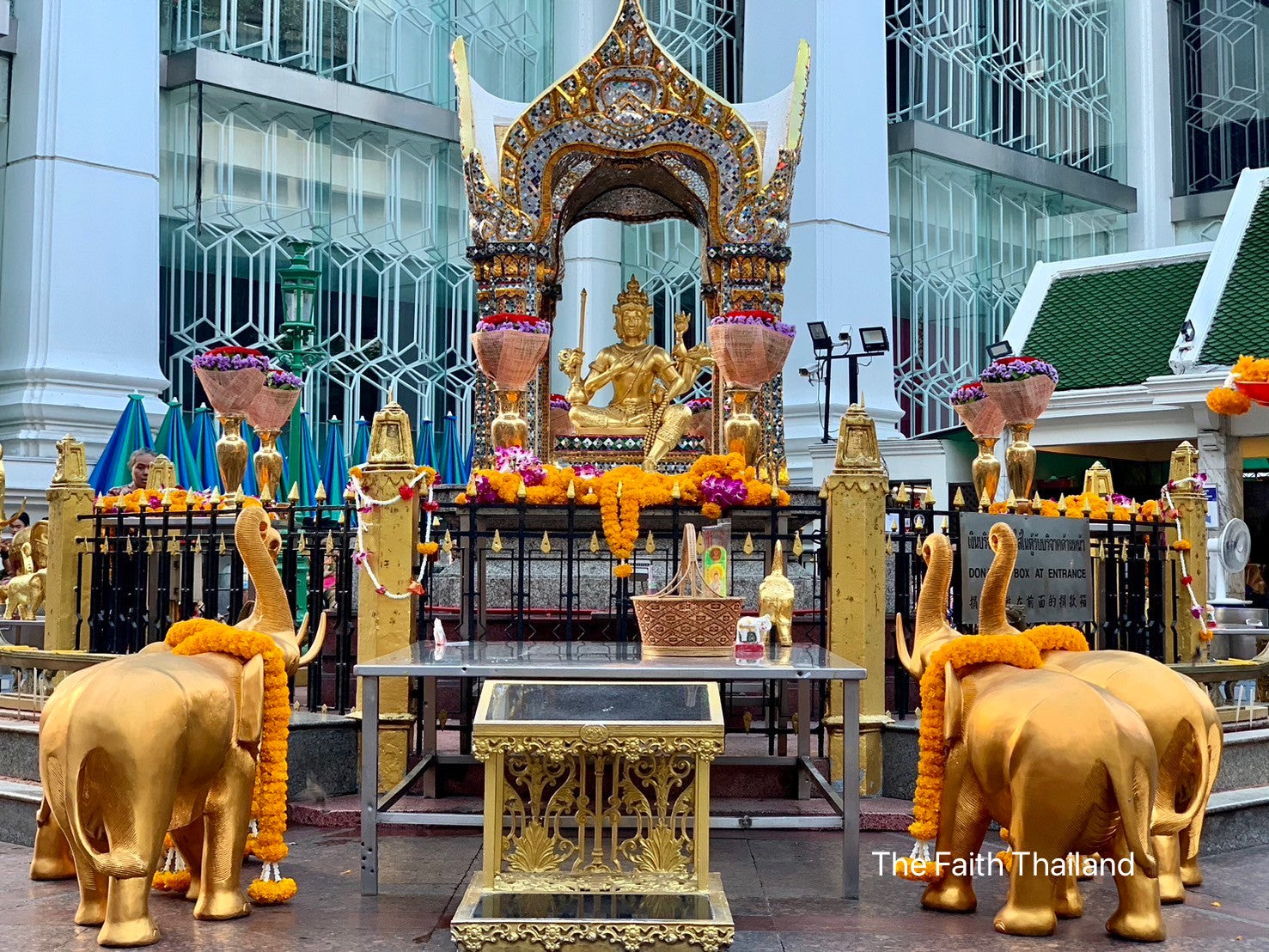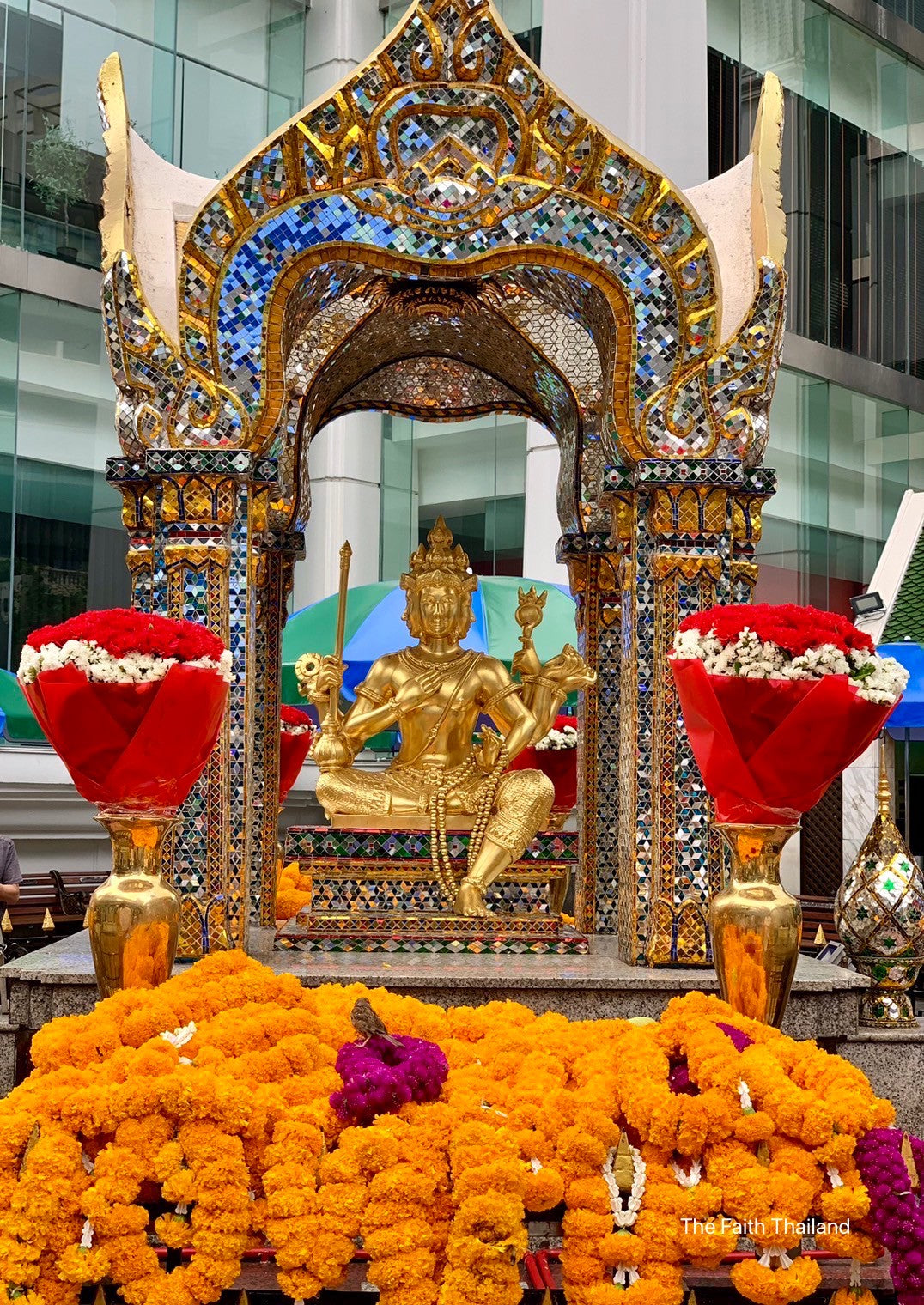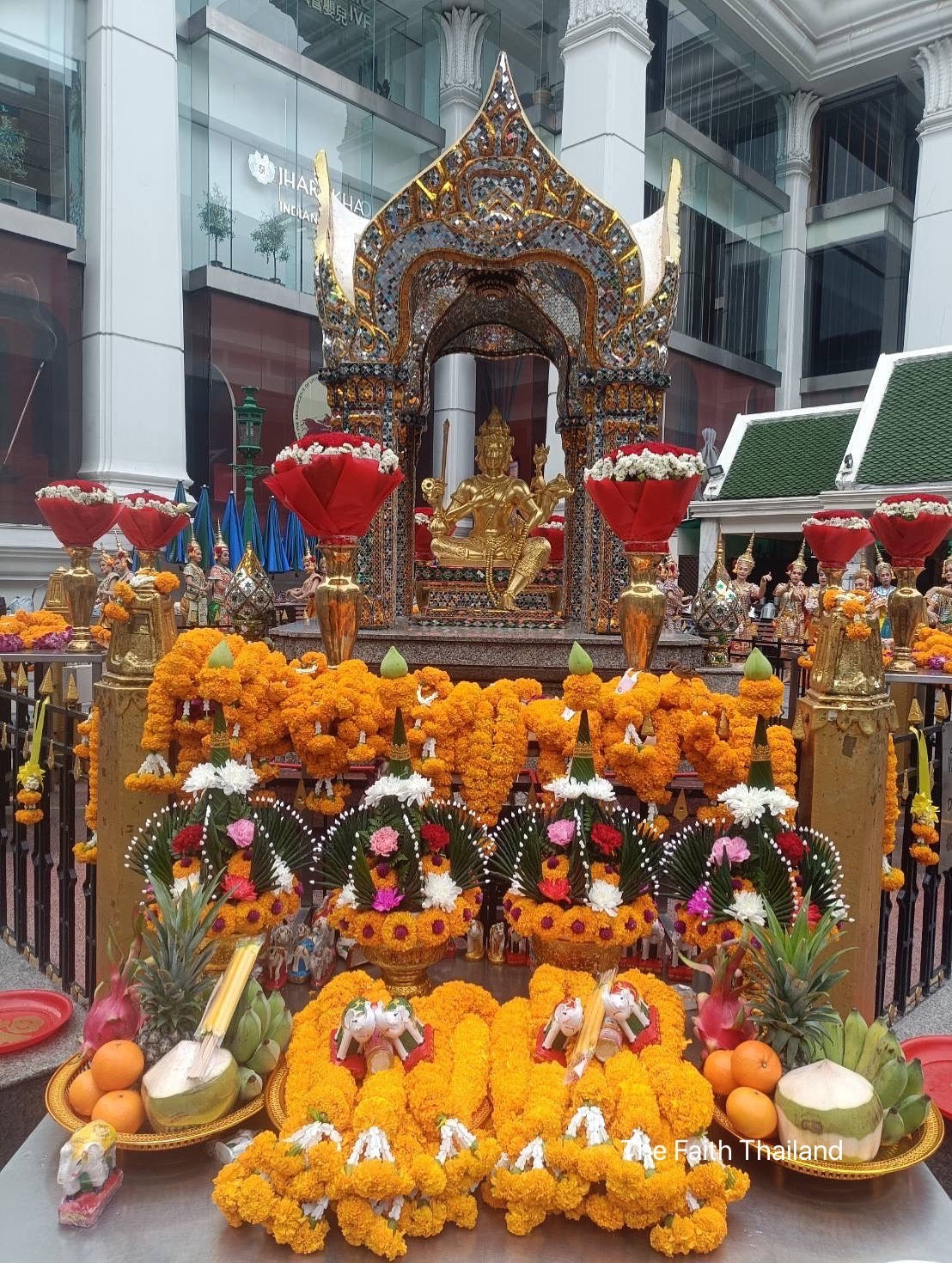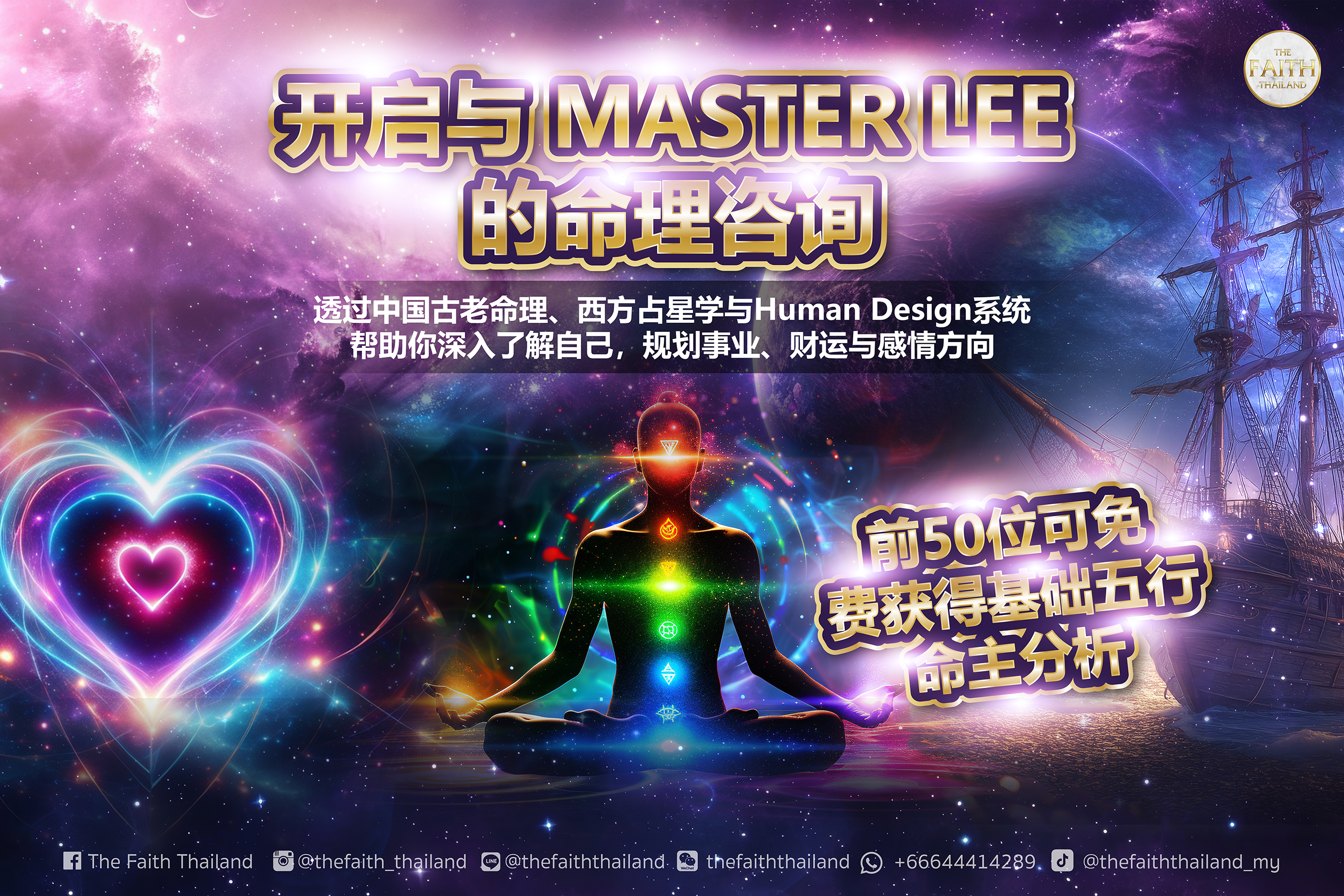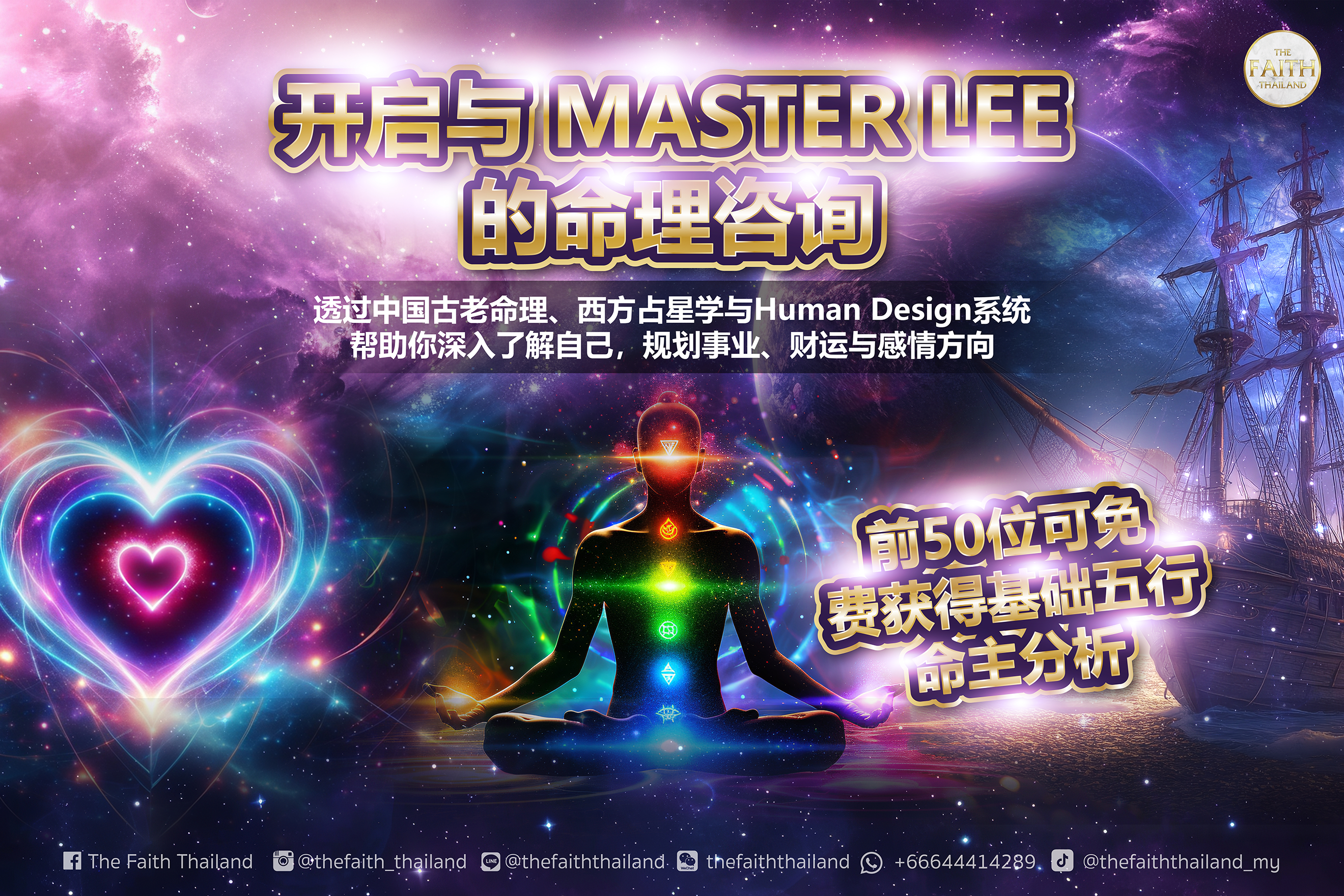Niche prayer trend: Why are more and more people choosing the Four-Faced Buddha?
In recent years, with the deepening of globalization and cultural exchanges, more and more people have begun to pay attention to and explore different beliefs and ways of praying. Among the many praying cultures, the Four-Faced Buddha has gradually become a small but rapidly rising trend. So, why do more and more people choose the Four-Faced Buddha as their object of prayer?
The charm and characteristics of the Four-Faced Buddha's blessing method
The Four-Faced Buddha, also known as Brahma, is famous for its compassion, multifaceted nature, and all-round blessings for different wishes such as love, career, study, and health. The unique way of praying to the Four-Faced Buddha has attracted many people to go to Thailand to experience it in depth. From lighting incense, offering flowers to making wishes, every step is full of sacred and solemn rituals. This devout method of praying can not only allow people to place good wishes, but also feel inner peace and satisfaction.
The method of praying at the Four-Faced Buddha is specific and effective. Worshippers usually express their wishes with offerings (such as incense, garlands and gold foil) and sincerity, and then establish a connection with the gods through the design of the altar and the execution of the ceremony. If you are a novice in praying, you can refer to our "Beginner's Guide to Praying at the Four-Faced Buddha" for detailed steps.
The Four-Faced Buddha also provides innovative experiences for modern people, such as digital blessing services. For those who cannot visit Bangkok, Thailand in person, online prayers and data-driven blessing methods provide more convenience. This new experience not only preserves the cultural significance of traditional blessing, but also incorporates new elements of modern technology. For more details, please visit our "Modern Innovation of New Year Blessings at the Four-Faced Buddha" to learn more.

Worshiping Buddha and the Four-Faced Buddha: Cultural Integration in Modern Society
In recent years, the rise of the global "worship of Buddha" trend has become an important way for more and more people to pursue a balance between body and mind. Represented by the Four-Faced Buddha in Thailand, this belief shows cross-cultural communication and integration. In modern society, the fast pace of life makes people need to find some way to release stress, and the culture of the Four-Faced Buddha provides a spiritual sustenance for this.
Especially in some special areas, such as love and career, the unique blessings and rituals of the Four-Faced Buddha make people more willing to invest in them. Even under the influence of digital life, many believers still choose to use traditional rituals to strengthen their wishes. And this way of integrating tradition with modern technology can innovate many new cultural derivatives, such as family prayer activities. You can read our "Integrating the Four-Faced Buddha's Blessings into Family New Year Celebrations" to learn related techniques.

The Four-Faced Buddha: A symbol of cultural heritage and Thai faith
The Four-Faced Buddha is not just a simple object of blessing, but an important symbol of faith that carries the profound Thai cultural heritage. Whether it is its spiritual legend or the rich religious philosophy behind it, the belief in the Four-Faced Buddha itself is a kind of cultural transmission. Many people, especially tourists, will feel a cultural intimacy that they have never experienced before after visiting the Four-Faced Buddha. You can read our "The Legend of the Four-Faced Buddha: The Miraculous Power of Faith in Modern Society" to better understand its historical and cultural significance.
In addition, the belief in the Four-Faced Buddha not only attracts tourists from afar, but also makes local believers have a deeper attachment to it. In today's diversified cultural environment, the Four-Faced Buddha has become a bridge of cross-cultural beliefs, prompting people from all over the world to establish emotional and spiritual connections through prayers and worship.

Start your journey to the Four-Faced Buddha
Whether you want to explore exotic cultures or long to fulfill your inner wishes, the Four-Faced Buddha can provide a devout way worth trying. For friends who want to experience it in person, you can visit our product page to find prayer accessories and guides related to the Four-Faced Buddha to make your prayer experience more complete.
For those who wish to learn more about the Four-Faced Buddha faith through reading, you can explore our extensive blog content .
Take action now, let us start this special journey of prayer together and find inner peace and satisfaction through the belief in the Four-Faced Buddha!
The Four-Faced Buddha Blessing Ceremony is Full of Sacredness and Tranquility
Unique Blessing Trend: Why Are More People Choosing the Four-Faced Buddha?
In recent years, with the deepening of globalization trends and cultural exchanges, more and more people are beginning to focus on and explore different faiths and ways of blessing. Among the many blessing cultures, the Four-Faced Buddha has gradually become a niche but rapidly emerging trend. So, why are more people choosing the Four-Faced Buddha as their blessing object?
The Charm and Characteristics of the Four-Faced Buddha Blessing
The Four-Faced Buddha, also known as Brahma, is renowned for its compassion, versatility, and comprehensive blessings for different desires such as love, career, academics, and health. The unique way of praying to the Four-Faced Buddha attracts many to Thailand for a deep experience; each step, from lighting incense and offering flowers to making wishes, is filled with a sense of sacredness and solemn ritual. This devout method of blessing not only allows one to entrust beautiful wishes but also provides inner peace and satisfaction.
The Four-Faced Buddha's blessing method is specific and effective; worshipers usually use offerings (such as incense, garlands, and gold leaf) and sincerity to express their wishes, thereby establishing a connection with the deity through the altar's design and ritual execution. If you are new to blessings, you can refer to our 'Four-Faced Buddha Prayer Guide for Beginners' for detailed steps.
The Four-Faced Buddha also provides modern people with innovative experiences such as digital services. For those who cannot visit Bangkok, Thailand, online prayers and data-driven blessing methods offer more convenience. This new type of experience not only preserves the cultural significance of traditional blessings but also integrates new elements of modern technology. For more details, please browse our 'Modern blessing Innovations in Four-Faced Buddha's New Year Blessing' .

Worship and the Four-Faced Buddha: Cultural Integration in Modern Society
In recent years, the global "worship" trend has become an important way for more and more people to seek physical and mental balance. Represented by Thailand's Four-Faced Buddha, this faith demonstrates cross-cultural exchange and integration. In modern society, the fast-paced lifestyle makes people more in need of finding ways to relieve stress, and the culture of the Four-Faced Buddha provides a spiritual support for this.
Especially in certain areas like love and career, the unique blessings and ceremonial sense of the Four-Faced Buddha make people more willing to engage in it. Even under the influence of digital lifestyles, many believers still choose to use traditional rituals to strengthen their prayers. This fusion of tradition and modern technology can create many new cultural derivatives, such as family blessing activities. You can read our 'Incorporating Four-Faced Buddha Blessing into Family New Year Celebrations' for related techniques and suggestions.

The Four-Faced Buddha: Symbol of Cultural Heritage and Thai Faith
The Four-Faced Buddha is not simply an object of blessing, but an important symbol of faith carrying the deep cultural heritage of Thailand. Whether it's its spiritual legends or the rich religious philosophy behind it, the faith in the Four-Faced Buddha itself is a transmission of culture. Many people, especially tourists, feel a cultural intimacy they've never experienced before after worshiping the Four-Faced Buddha. You can read our 'Legend of the Four-Faced Buddha: Miracle Power of Faith in Modern Society' to better understand its history and cultural significance.
In addition, the faith in the Four-Faced Buddha not only attracts visitors from afar but also creates a deeper attachment for local believers. In today's diverse cultural environment, the Four-Faced Buddha has become a bridge of cross-cultural faith, encouraging people worldwide to establish emotional and spiritual connections through prayers and worship.

Start Your Journey of Faith with the Four-Faced Buddha
Whether you want to explore exotic cultures or desire to fulfill inner prayers, the Four-Faced Buddha offers a devout way worth trying. For those who want to experience it firsthand, you can visit our product page to find accessories and guides related to the Four-Faced Buddha to make your blessing experience more complete.
For those willing to learn more about the Four-Faced Buddha faith through reading, you can explore our extensive blog content .
Act quickly and let us embark on this special blessing journey together, finding inner peace and satisfaction through the faith in the Four-Faced Buddha!
